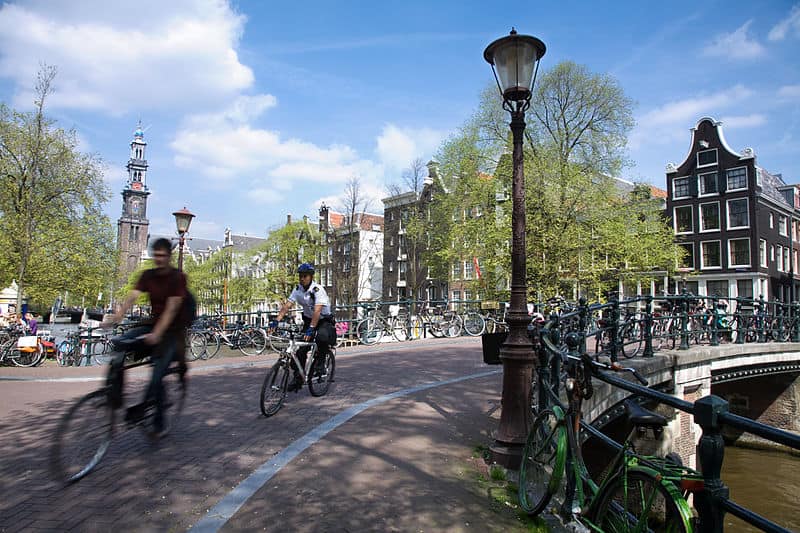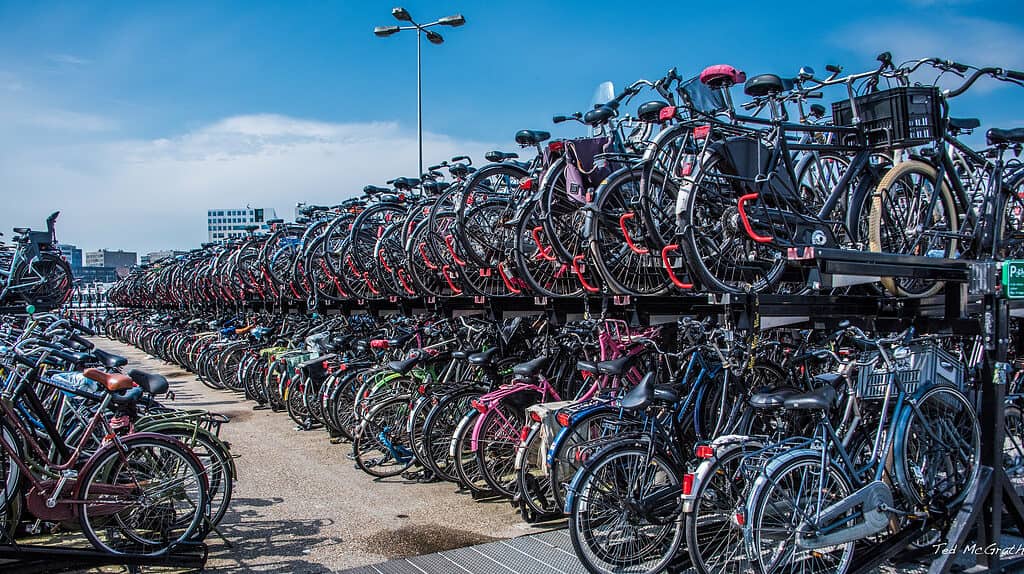
As anyone who has attempted to navigate the center of Amsterdam knows, this city is owned by cyclists. You can see them hurrying in swarms through the hundreds of kilometers of dedicated cycling lanes, unbothered by traffic rules usually reserved for cars. Around 40% of all trips in Amsterdam are made on a bike, whereas in countries like the UK that figure sits at around 2%.
But the popularity of the bicycle comes at a cost: rampant bike theft. Every year, tens of thousands of bicycles are stolen in Amsterdam, with estimates ranging from 11,000 to 80,000. The sheer number of stolen bikes begs the question: what happens to them?
“Almost everybody in Amsterdam, or even in Cambridge, if you ride a bike, has had the experience of leaving somewhere and not finding their bike,” says Titus Venverloo, a research fellow at the MIT Senseable Amsterdam Lab in Amsterdam.
To shed light on this issue, a team of researchers from MIT’s Senseable City Lab collaborated with the Amsterdam Institute for Advanced Metropolitan Solutions to conduct an experiment. They outfitted a fleet of around 100 second-hand bicycles with low-cost mobile trackers, locked them in public locations, and followed their whereabouts from June to November 2021.

The findings were both surprising and informative. In the span of just three months, 70 of the bikes were stolen, which revealed a much higher rate of theft than reported officially, which may have to do with the bikes being parked solely in public spaces like squares or one of the many mass bike parking spaces across Amsterdam.
But what was intriguing was that out of 70 stolen bikes, 68 stayed in the local Amsterdam area. Around five bikes were tracked in the vicinity of second-hand shops, suggesting they were resold there in a never-ending cycle of stolen second-hand bikes that get put on the market only to be stolen and resold again and again.
Another 12 bikes were pinpointed around places that are known as bicycle black markets. Two dozen stolen bikes made very similar movements, suggesting they were part of the same subnetwork of bikes, meaning they could have been operated by the same small group of people.
According to Fabio Duarte, principal research scientist at MIT’s Senseable City Lab and co-author of the paper, “If they’re stolen and sold, the new owner uses the bike in the same areas, probably without knowing it was stolen.”
The fact that most stolen bikes remain in the local area has implications for how the city can tackle the issue. It suggests that officials should focus on preventing theft rather than trying to recover stolen bikes.
The researchers were not interested in answering what happens to each and every bike in the study, nor did they seek to incriminate the thieves who stole the ‘samples’. In fact, they actually went to great lengths to protect the privacy of the users of the stolen bikes. For instance, when the researchers noticed clear patterns in a bicycle’s movement that could indicate the home of the user, they immediately stopped collecting data. However, they shared their findings with Amsterdam officials, who can use this information to design better policies.
“Having this inexpensive technology, at least you start seeing patterns,” Duarte says. “Now you know where to be focused.”
The findings may extend beyond bicycle theft, as the same method could be used to track other types of goods vulnerable to theft. In a more unrelated application, data on mobility patterns could also be highly useful for improving urban design.
The findings were reported in the journal PLoS ONE.


